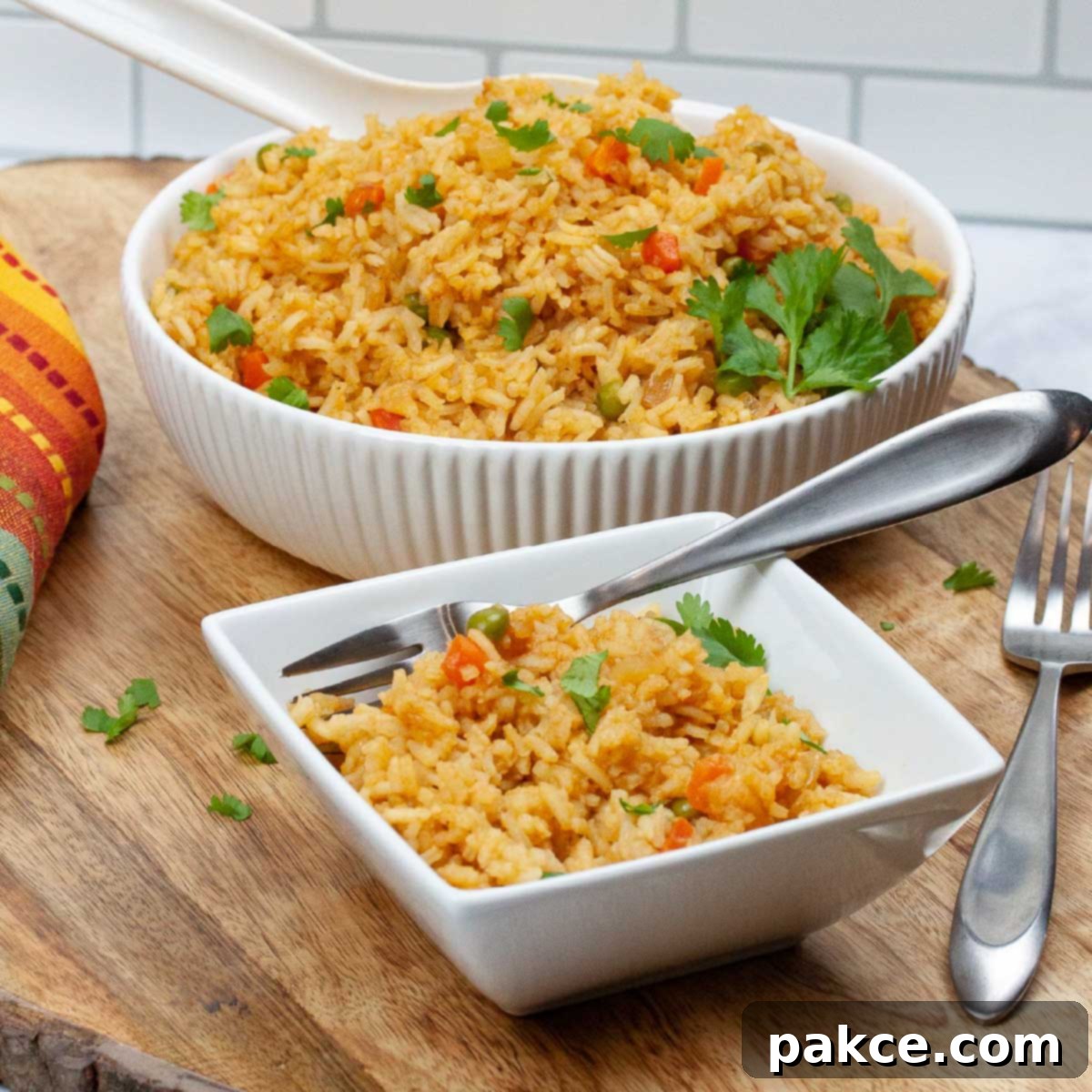Authentic Restaurant-Style Mexican Rice with Vegetables: Your Guide to Fluffy, Flavorful Perfection
Transform your ordinary dinner into a vibrant Mexican fiesta with this incredibly easy and utterly delicious recipe for restaurant-style Mexican rice with vegetables. Forget plain white rice; this aromatic, richly flavored side dish, packed with traditional mixed vegetables, is guaranteed to have everyone asking for second helpings. It’s the perfect accompaniment to your favorite Mexican entrées, a fantastic flavor boost for burrito wraps and bowls, or a satisfying standalone vegetarian meal.
Add Salt & Serve may earn affiliate commissions from purchases made using links on this page.
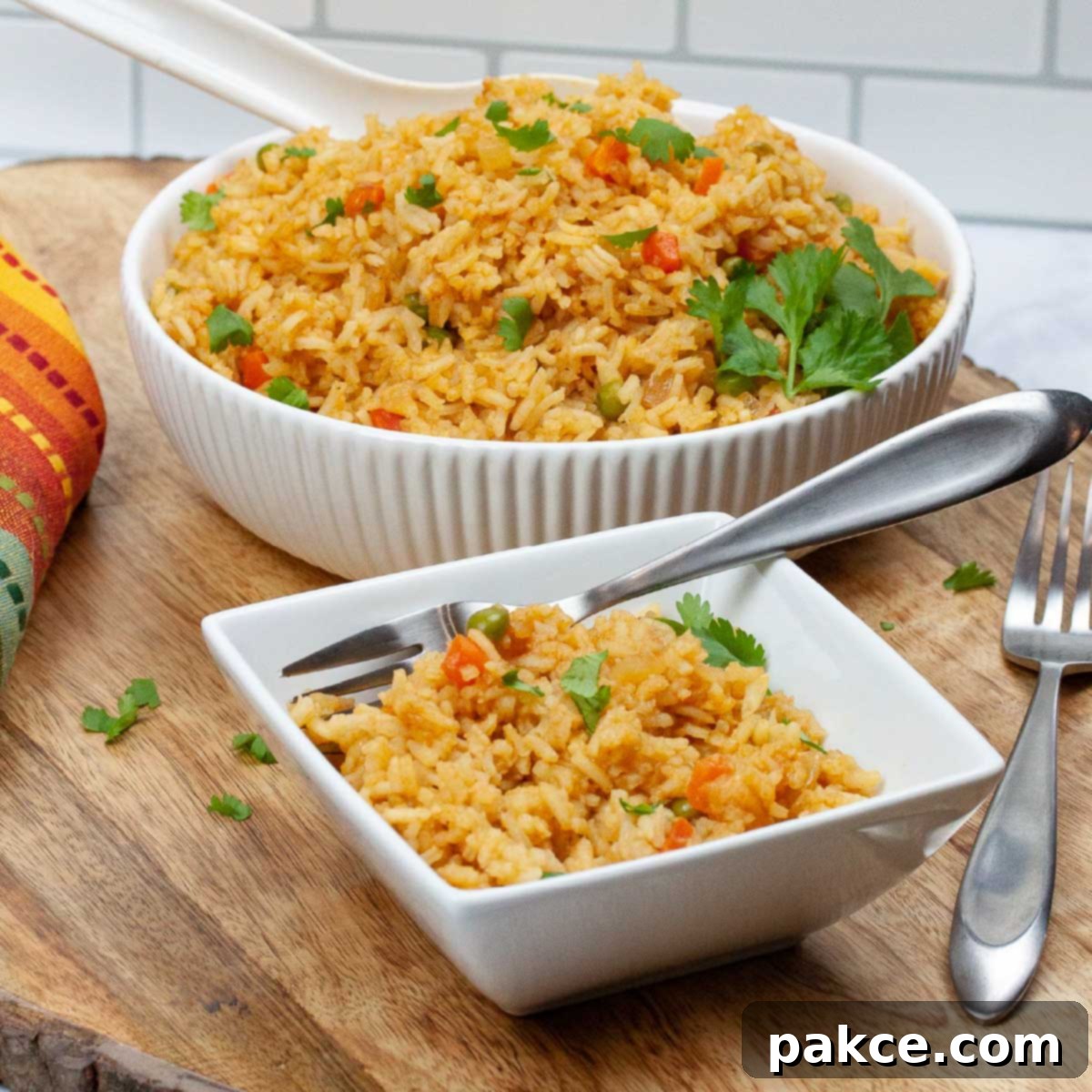
[feast_advanced_jump_to]
Why This Mexican Rice Recipe Stands Out
There’s a reason why Mexican rice is a staple in so many households and a beloved side at every Mexican restaurant. Its vibrant color, savory depth, and tender texture make it an irresistible addition to any meal. This recipe captures that authentic restaurant flavor, delivering a rice dish that’s fluffy, separate, and brimming with the classic taste you crave. We achieve this through a few key techniques: rinsing the rice for perfect texture, toasting it in oil for enhanced flavor and structure, and using a balanced blend of seasonings and vegetables that infuse every grain with deliciousness.
Essential Ingredients for Perfect Mexican Rice with Vegetables
Crafting the perfect Mexican rice doesn’t require a long list of exotic ingredients. In fact, many of these items are probably already in your pantry. The magic lies in how these simple components come together to create a symphony of flavors. Here’s a closer look at what you’ll need and why each ingredient plays a crucial role:
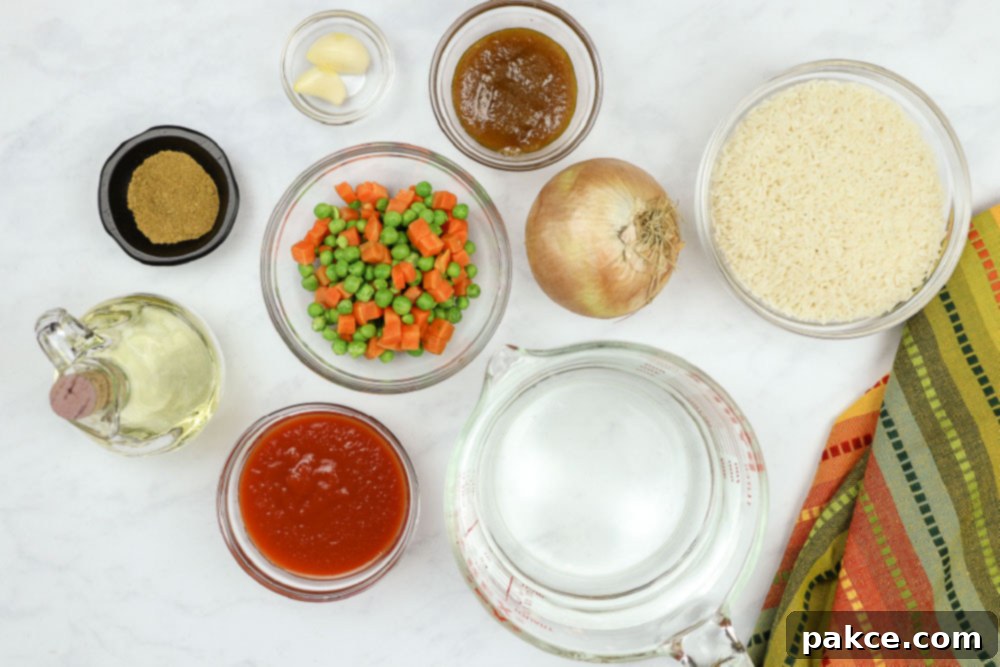
- Oil. Any neutral-flavored vegetable oil works well here, but I highly recommend using avocado oil. Its high smoke point makes it excellent for toasting the rice without burning, and it imparts a very subtle, clean flavor. Other good options include canola oil or grapeseed oil.
- Long-grain white rice. This is the cornerstone of fluffy Mexican rice. Rinsing long-grain white rice thoroughly before cooking is crucial as it removes excess starch, preventing the grains from sticking together. Basmati rice is another excellent choice, renowned for its long, slender grains that cook up individually and beautifully fluffy.
- Garlic. Fresh garlic is absolutely essential for that authentic, pungent base flavor. While garlic powder can be a substitute in a pinch, fresh minced garlic delivers a depth and aroma that cannot be replicated.
- Onion. Yellow onion, finely chopped, provides a sweet and savory aromatic foundation. It caramelizes slightly as it cooks with the rice, adding another layer of complex flavor.
- Cumin. This warm, earthy spice is indispensable in Mexican cuisine. Cumin contributes a distinctive, savory note that is characteristic of authentic Mexican rice.
- Bouillon or soup base. For maximum flavor impact, a good quality bouillon or soup base is key. I typically use chicken base for its rich, savory profile. However, for a vegetarian or vegan option, a “no chicken base” works wonderfully (more on this below). It amplifies the overall taste of the rice, making it truly restaurant-quality.
- Tomato sauce. This provides the signature reddish-orange color of Mexican rice, along with a subtle tang and umami depth. It’s a quick and easy way to add a concentrated tomato flavor without the chunks of diced tomatoes.
- Water. The liquid component for cooking the rice. The correct ratio of water to rice is vital for perfectly cooked, fluffy grains.
- Frozen mixed vegetables. Traditionally, Mexican rice often includes a mix of peas and carrots. However, feel free to customize! You can use a blend that also contains corn and green beans, or even fresh, finely diced vegetables if you prefer. Frozen vegetables are a convenient way to add color and nutrients without extra prep time.
Adaptations for Dietary Needs: Vegetarian, Vegan & Gluten-Free Mexican Rice
One of the best aspects of this Mexican rice recipe is how easily it can be adapted to suit various dietary restrictions and personal preferences without sacrificing flavor. Here’s how you can make it work for everyone at your table:
Vegetarian and Vegan Adaptation: The primary ingredient to swap for a meat-free version is the bouillon. Instead of chicken bouillon, use a high-quality vegetable soup base. My top recommendation for an exceptional vegetarian and vegan flavor boost is Better Than Bouillon No Chicken Base (affiliate link). This product delivers an incredibly close flavor profile to real chicken soup base, making your vegetarian dishes rich and satisfying. It has a distinctive shiny, paste-like consistency, as seen in many product photos. For those who prefer a different flavor, a beef version (affiliate link) is also available, though for this recipe, the “No Chicken” or standard vegetable base is ideal. Since the rest of the ingredients are plant-based, simply making this one substitution makes the entire dish vegan-friendly.
Gluten-free: While most rice is naturally gluten-free, the main concern for gluten-free diets often lies with bouillon or soup bases. Some brands may contain wheat or rye as thickeners or flavor enhancers. Always check your bouillon labels carefully for certifications or explicit “gluten-free” claims. Many brands now offer certified gluten-free options, making it easy to enjoy this delicious rice safely. With a gluten-free bouillon, this recipe is entirely safe for those avoiding gluten.
Step-by-Step Guide: Crafting Delicious Mexican Rice with Vegetables
Making restaurant-style Mexican rice at home is simpler than you might think. Follow these steps carefully for fluffy, flavorful results every time:
Begin by gathering all your ingredients: oil, long-grain white rice, minced garlic, chopped onion, cumin, your chosen bouillon or soup base, tomato sauce, water, and your preferred frozen mixed vegetables (peas and carrots are classic, but any blend works beautifully).
Preparation is Key: Rinsing the Rice
The first crucial step for achieving perfectly fluffy, non-sticky rice is thorough rinsing. Place your long-grain white rice in a fine-mesh strainer and rinse it under cold running water. Agitate the rice gently with your fingers until the water runs completely clear, indicating that excess starch has been washed away. This process is vital for the desired texture, preventing the grains from clumping together. Once rinsed, drain the rice exceptionally well, shaking off as much water as possible.
Building the Flavor Base: Toasting the Rice and Sautéing Aromatics
Next, in a large skillet or Dutch oven, heat your oil over medium heat. Once shimmering, add the well-drained rice. Cook the rice, stirring frequently, until the grains begin to appear somewhat glossy and take on a light golden color. This toasting step is essential; it develops a nutty flavor and helps each grain maintain its individual structure, contributing to the ultimate fluffy texture.
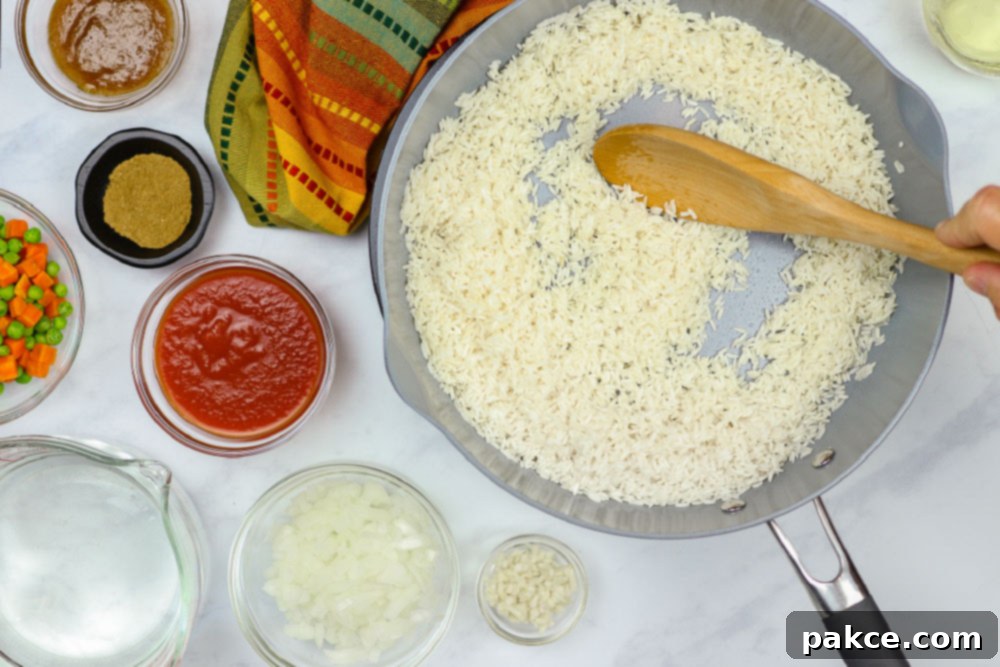
Once the rice is nicely browned, add the minced garlic and chopped onion to the skillet. Continue to cook for another 1-2 minutes, stirring constantly, until the aromatics are fragrant and the onion has softened slightly. Be careful not to burn the garlic. Then, stir in the cumin, bouillon or soup base, and tomato sauce. Mix well to ensure all the rice grains are coated with this flavorful mixture.
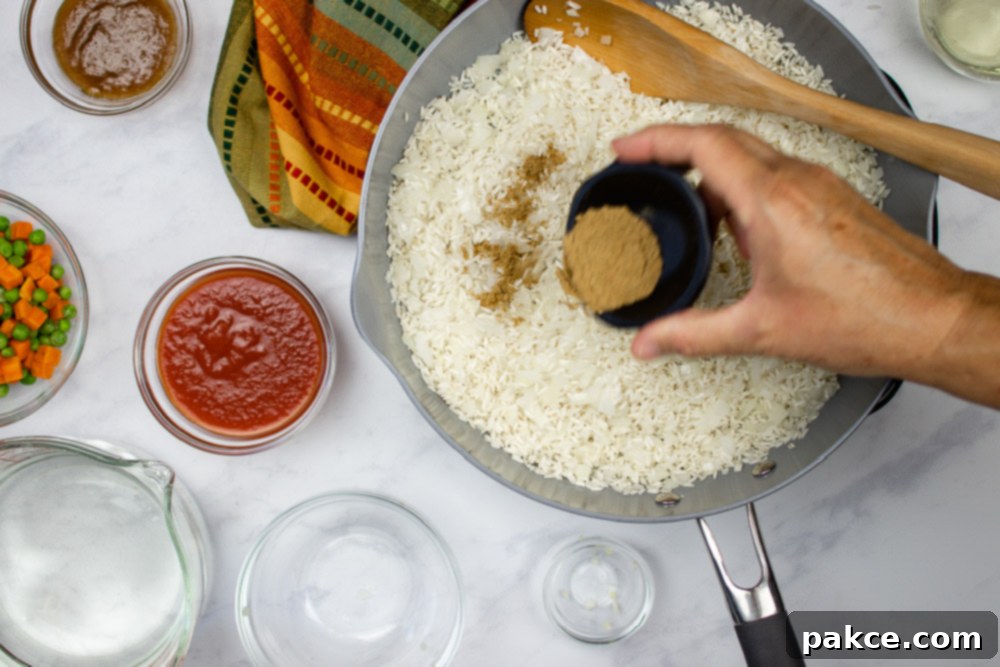
Simmering to Perfection: Liquid and Vegetables
Pour in the water and add the frozen mixed vegetables to the skillet. Stir gently to combine all the ingredients without overmixing, which can break down the rice grains prematurely. Bringing the mixture to a boil will signal the start of the cooking process.
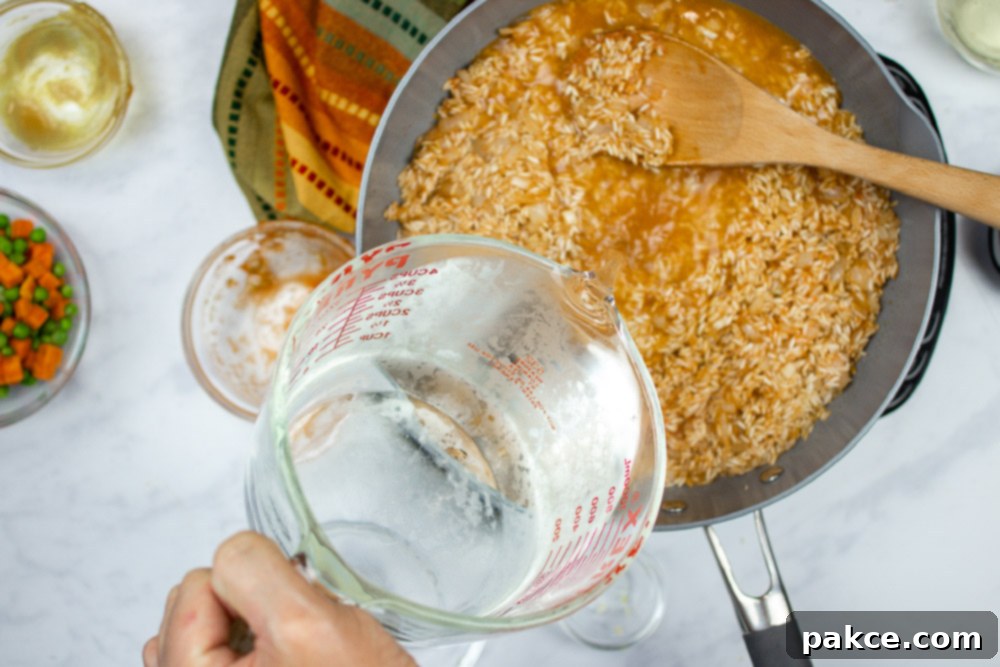
Once boiling, immediately reduce the heat to low, cover the skillet tightly with a lid, and let it simmer. The key to perfect rice is patience and not disturbing the cooking process. Avoid lifting the lid, as this releases steam essential for even cooking. Simmer for approximately 20 to 25 minutes, or until all the liquid has been absorbed by the rice. You’ll know it’s ready when tiny craters form on the surface of the rice.
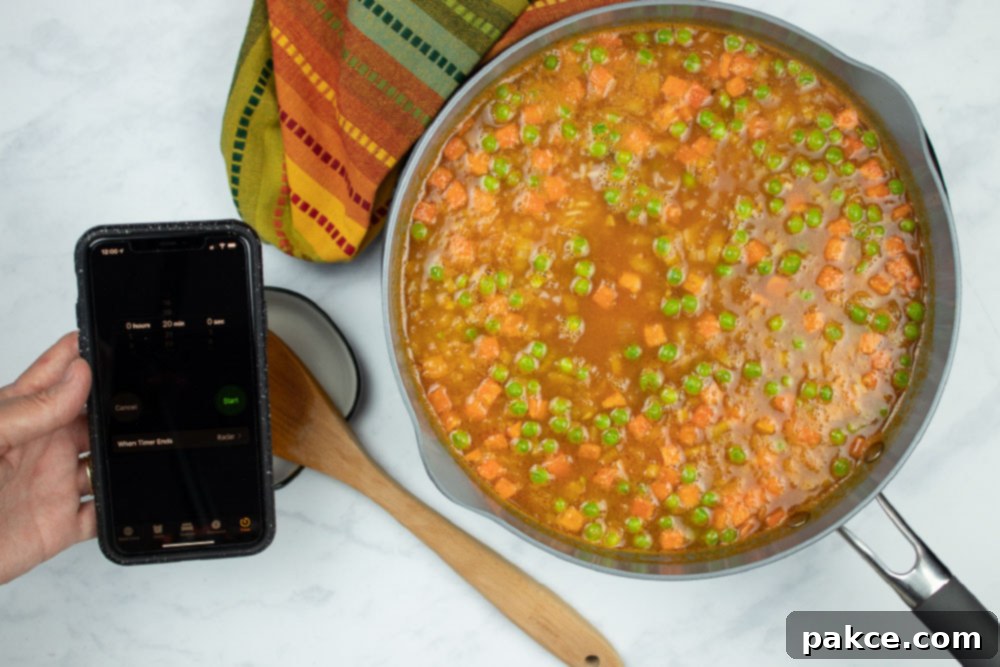
Rest and Fluff: The Final Touch
Once the cooking time is up, remove the skillet from the heat, but keep the lid on! Let the rice rest, covered, for at least 5-10 minutes. This resting period allows the steam to redistribute, resulting in even fluffier and more tender grains. After resting, remove the lid and gently fluff the rice with a fork. This separates the grains and incorporates any vegetables that may have settled. Serve immediately and enjoy your perfectly prepared restaurant-style Mexican rice!
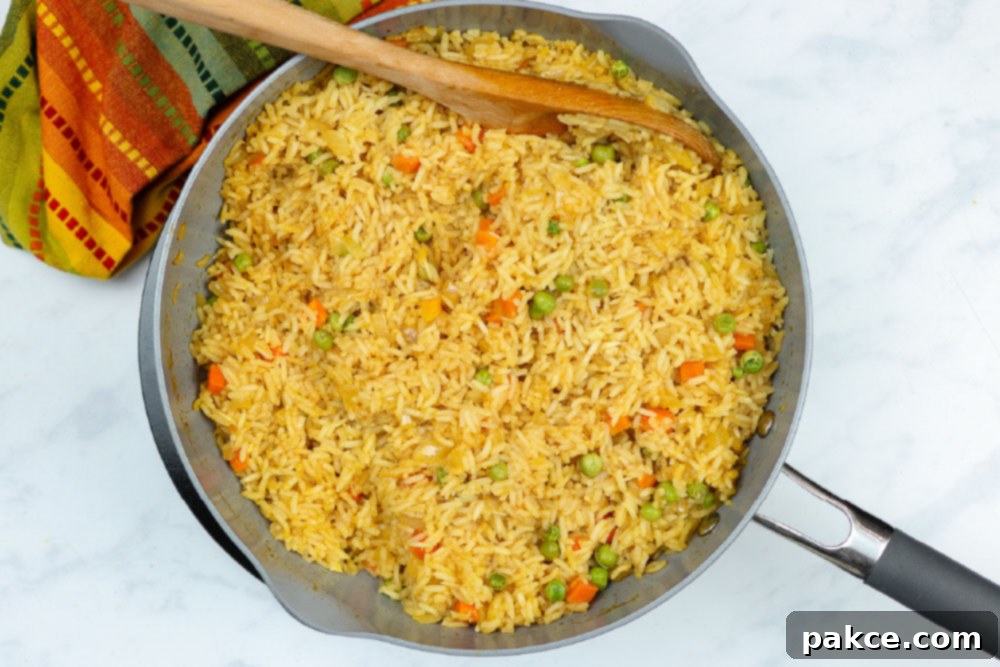
Frequently Asked Questions About Mexican Rice
Have questions about making the best Mexican rice? We’ve got answers to help you perfect this classic side dish.
What is the best kind of rice for Mexican rice?
For authentic Mexican rice, long-grain white rice is ideal. Its grains remain separate and fluffy after cooking, which is the hallmark of a great Mexican rice. Rinsing it thoroughly removes excess starch, further ensuring that perfect texture. Basmati rice is another fantastic option due to its naturally long, non-sticky grains that also cook up beautifully. While short-grain rice can be used, it tends to be starchier and may result in a stickier texture, which is not typical for restaurant-style Mexican rice.
Can I double or halve the recipe?
Absolutely! This recipe is very forgiving and easily adjustable. You can seamlessly double it for a larger crowd or halve it for a smaller serving. For precise measurements, utilize the adjustable servings feature in the recipe card below. Simply select your desired number of servings, and the ingredient quantities will automatically update. When doubling, ensure you use a sufficiently large skillet or pot to accommodate the increased volume and ensure even cooking.
What should I serve with Mexican rice?
Mexican rice is incredibly versatile! It pairs beautifully with almost any Mexican dish. Serve it alongside classic tacos, sizzling fajitas, or cheesy enchiladas. It also makes a flavorful and hearty filling for burritos, burrito bowls, and quesadillas. Don’t limit it to just Mexican night – it’s an excellent base for serving rich stews like Ropa Vieja or Carne Guisada for the Instant Pot. It’s particularly delicious when substituted for plain white rice in a hearty Tex-Mex Beef Casserole, making leftover Carne Guisada even more exciting!
Can I make Mexican rice ahead?
For the freshest and fluffiest results, I always recommend cooking the rice just before serving if possible. However, you can significantly reduce last-minute prep time by preparing some components in advance. Chop your onion and mince your garlic, then store them in an airtight container in the refrigerator. The rice can also be rinsed ahead of time and kept drained in the fridge. To save even more space, you can combine similar groups of ingredients in one container:
- Chopped onion, minced garlic, and mixed vegetables
- Bouillon or soup base and tomato sauce (you can even mix in the water if you prefer)
When you’re ready to cook:
In a large skillet, heat the oil and add the pre-rinsed rice to brown slightly.
Add the prepared vegetables, cumin, the tomato sauce and soup base mixture, and water. Stir gently until well mixed.
Bring to a boil, then reduce heat to low and simmer covered until all the liquid is absorbed. Since your ingredients might be cold, this could take slightly longer, around 25 to 30 minutes; adjust as necessary. Fluff and serve. This allows you to have a warm, freshly cooked dish with minimal effort on busy weeknights!
Can I freeze Mexican rice?
Yes, cooked Mexican rice freezes remarkably well, making it perfect for meal prep! To freeze, first ensure the rice has cooled completely to room temperature. This prevents condensation and ice crystals from forming, which can make the rice mushy. Portion the cooled rice into airtight freezer-safe containers or heavy-duty freezer bags. Avoid packing it down too tightly, as this can compress the grains. Stored properly, Mexican rice will retain its quality in the freezer for up to 3-4 months. When ready to eat, thaw overnight in the refrigerator, then reheat gently on the stovetop with a splash of water or in the microwave until heated through.
Why do I have to cook the rice in oil first?
Toasting the rice in oil before adding any liquid is a critical step for achieving that signature fluffy, restaurant-quality texture. This quick sauté accomplishes a few key things: Firstly, it creates a protective barrier around each grain, which helps them maintain their shape and prevents them from clumping together and becoming sticky during cooking. Secondly, it adds a subtle, nutty depth of flavor to the rice, similar to how browning flour for a roux enhances the taste of Creole dishes. This simple technique elevates the overall flavor profile and ensures each grain is perfectly cooked and separate.
Can I substitute salsa for the tomato sauce?
Yes, you can absolutely use salsa as a flavorful substitute for tomato sauce in this recipe! However, keep in mind that salsa can vary greatly in consistency and liquid content. A salsa with a good amount of liquid will work best, as the tomato sauce contributes not only flavor but also a significant portion of the cooking liquid. If your salsa is very thick, you might need to add a little extra water to maintain the correct rice-to-liquid ratio. Conversely, if it’s very watery, you might reduce the initial water slightly. Keep a close eye on the rice as it simmers; if it seems too wet, you can uncover it briefly towards the end to allow some steam to escape. Using salsa will introduce more complex flavors and a bit of texture, possibly even a touch of heat depending on your choice!
Can I make it spicier?
Certainly! If you love a little extra kick, there are several easy ways to dial up the heat in your Mexican rice. You can add finely chopped fresh jalapeño or serrano peppers to the skillet when you sauté the garlic and onion. For an even spicier kick, include some finely diced habanero (use sparingly!). Alternatively, a few dashes of your favorite hot sauce or a pinch of cayenne pepper added along with the liquid will infuse the rice with a pleasant warmth. Experiment with different chili powders or a touch of chipotle powder for a smoky heat profile.
What kind of pot or skillet is best for cooking Mexican rice?
For best results, use a heavy-bottomed skillet or a Dutch oven with a tight-fitting lid. The heavy bottom ensures even heat distribution, preventing the rice from sticking and burning at the bottom while the top remains undercooked. A tight-fitting lid is crucial for trapping steam, which cooks the rice evenly and makes it fluffy. Cast iron, enameled cast iron, or stainless steel skillets are excellent choices. Avoid thin-bottomed pots, as they can lead to uneven cooking and scorching.
Tips for perfectly fluffy Mexican rice every time?
Achieving perfectly fluffy Mexican rice is a culinary goal, and it’s quite simple with these key tips:
1. Rinse Your Rice Thoroughly: This is arguably the most important step to remove excess starch, preventing stickiness.
2. Toast the Rice: Sautéing the dry rice in oil before adding liquid creates a protective barrier, helps the grains stay separate, and adds a nutty depth of flavor.
3. Maintain Proper Liquid Ratio: Stick to the recommended water-to-rice ratio. Too much liquid leads to mushy rice, too little results in crunchy, undercooked grains.
4. Tight-Fitting Lid is Essential: During simmering, steam cooks the rice. A tight lid traps this steam efficiently.
5. Avoid Peeking: Resist the temptation to lift the lid while the rice simmers. Each time you lift it, steam escapes, prolonging cooking time and potentially leading to unevenly cooked rice.
6. Don’t Stir While Simmering: Stirring releases starch and can break down the rice grains, making them mushy.
7. Rest Your Rice: After cooking, let the rice rest, covered, off the heat for 5-10 minutes. This allows the steam to redistribute, resulting in a perfectly tender and fluffy texture.
8. Fluff with a Fork: Once rested, gently fluff the rice with a fork to separate the grains.
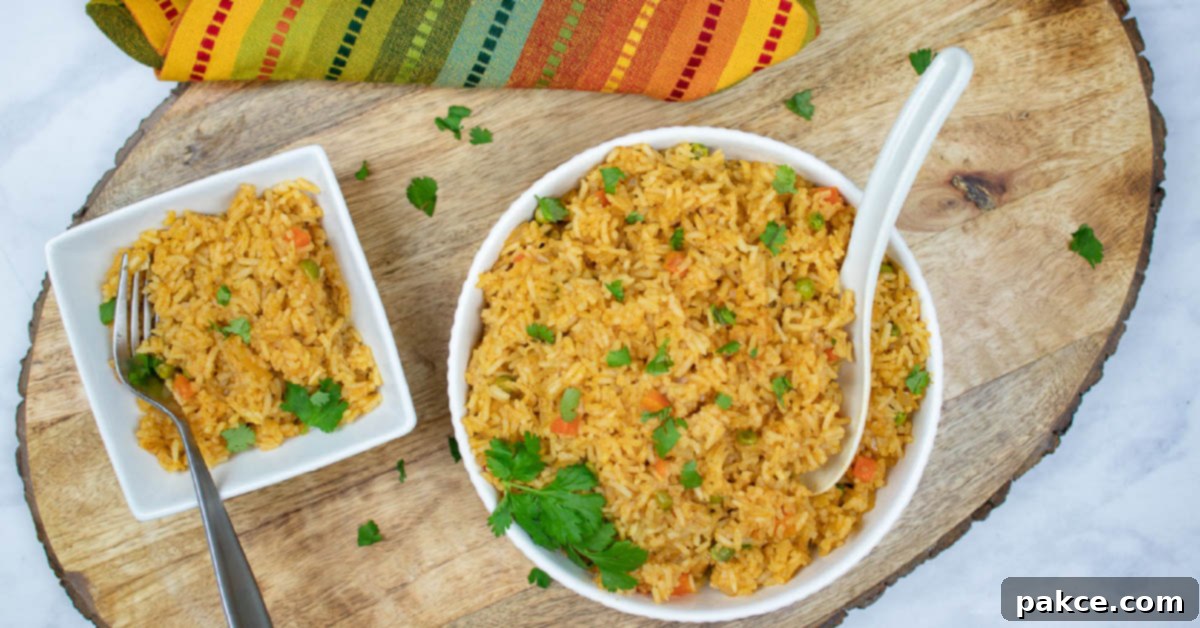
Serving Suggestions for Your Delicious Mexican Rice
This restaurant-style Mexican rice isn’t just a side dish; it’s a star in its own right, capable of elevating a wide array of meals. Its robust flavors and comforting texture make it an incredibly versatile component for any Mexican-inspired feast or even a simple weeknight dinner.
- Classic Mexican Pairings: Serve alongside sizzling chicken or beef fajitas, crispy tacos (carnitas, al pastor, or fish), cheesy enchiladas, or tender carne asada. Its vibrant color and savory profile perfectly complement grilled meats and rich sauces.
- Burritos and Bowls: Use it as the flavorful base for homemade burritos and burrito bowls. Layer it with your favorite beans, grilled vegetables, salsa, guacamole, and a sprinkle of cheese for a complete and satisfying meal.
- Hearty Stews and Soups: This rice is an excellent absorbent bed for saucy dishes. Try it with a rich slow cooker Ropa Vieja, a comforting bowl of Posole, or a zesty Carne Guisada for the Instant Pot. It soaks up all the delicious juices, enhancing every bite.
- Unique Casseroles: For a delightful twist, swap out plain white rice for this Mexican rice in your favorite casseroles, especially Tex-Mex variations like a Tex-Mex Beef Casserole. It adds an incredible depth of flavor that transforms the entire dish.
- Vegetarian Main Course: Served with black beans, corn salsa, and fresh avocado, this flavorful rice can easily stand alone as a satisfying vegetarian main course. Add some cotija cheese or a dollop of sour cream for extra richness.
- Simple Sides: Sometimes, all you need is a simple grilled chicken breast or a pan-seared fish fillet, and this Mexican rice makes the perfect, exciting side to round out the meal.
No matter how you choose to enjoy it, this homemade Mexican rice is sure to be a crowd-plepleaser, bringing the authentic taste of your favorite Mexican restaurant right to your dining table.
Recipe
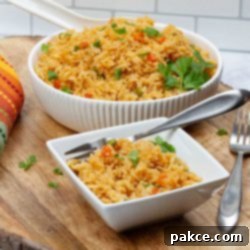
Mexican Rice with Vegetables
Add to Shopping ListGo to Shopping List
Ingredients
- 1 tablespoon oil
- 1½ cups long-grain white rice
- 2 cloves garlic
- ¾ cup yellow onion
- 1½ teaspoons cumin
- 2 tablespoons chicken bouillon
- 4 ounces tomato sauce
- 3½ cups water
- ⅔ cup frozen mixed vegetables
Instructions
-
In a mesh strainer, rinse 1½ cups long-grain white rice until the water runs clear. Drain well.
-
Mince 2 cloves garlic and chop ¾ cup yellow onion.
-
In a large skillet heat 1 tablespoon oil and add rice. Cook until the rice starts to appear somewhat glossy.
-
Once browned, add garlic, onion, 1½ teaspoons cumin, 2 tablespoons chicken bouillon, and 4 ounces tomato sauce and stir to mix.
-
Add 3½ cups water and ⅔ cup frozen mixed vegetables and stir gently.
-
Bring to a boil, then reduce heat to low and simmer covered until all the liquid is absorbed, about 20 to 25 minutes.
Notes
Gluten-free: Some bouillon contains wheat or rye. Check your labels or buy certified GF bouillon.
Nutrition per serving
Share
Pin
